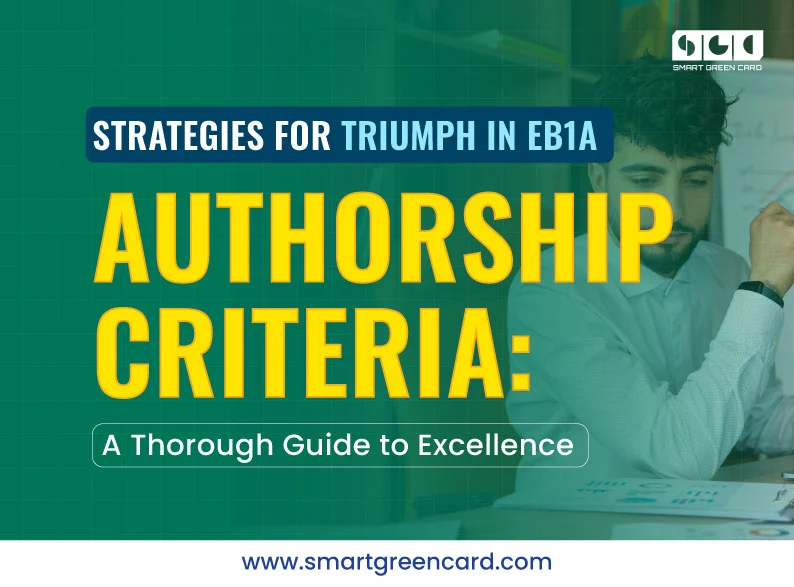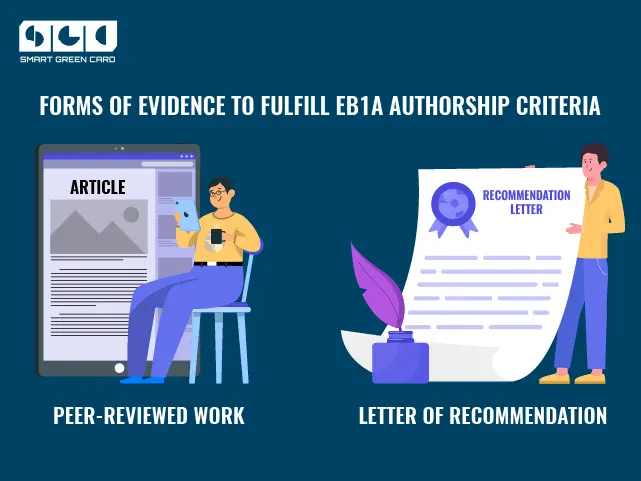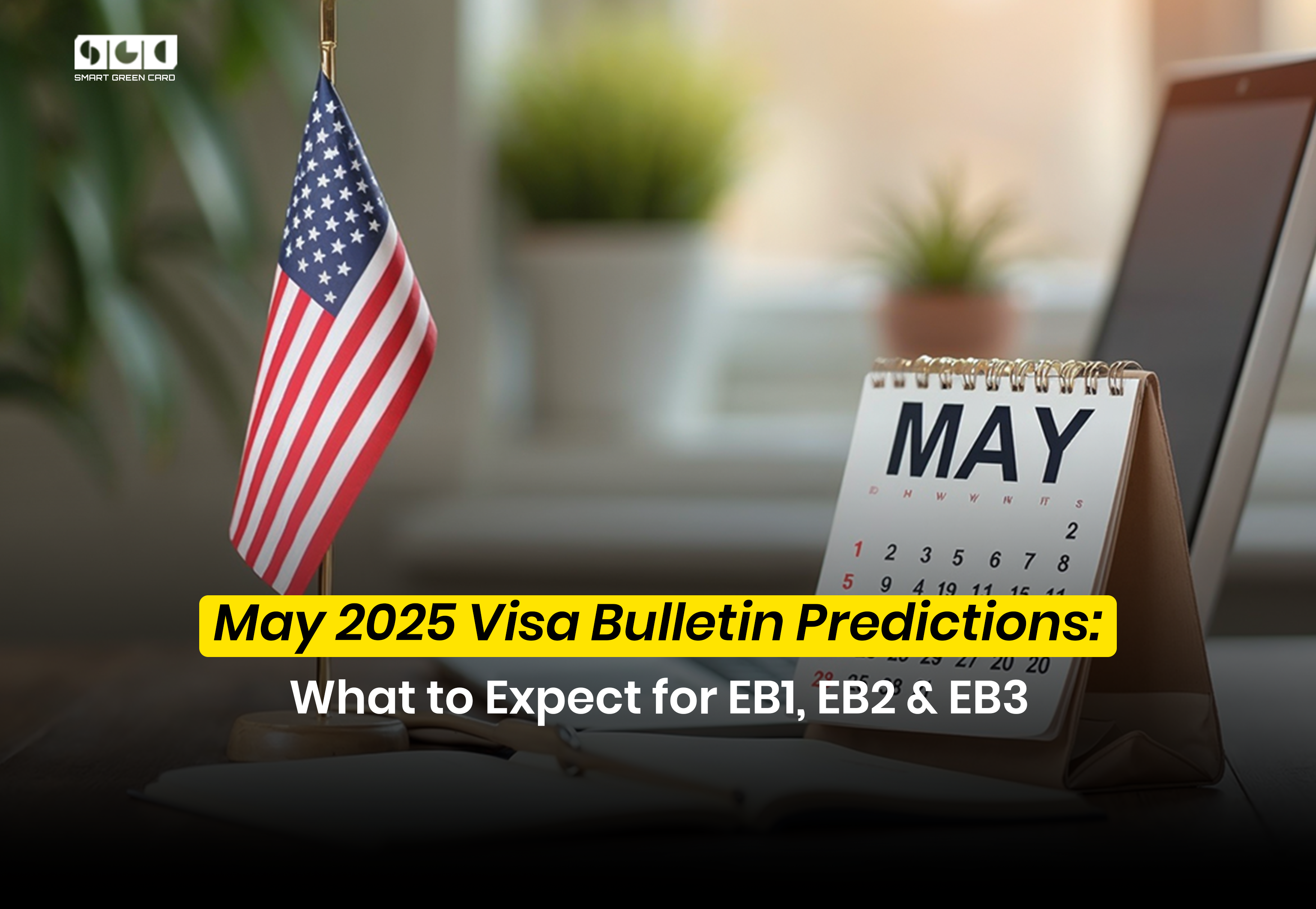Strategies for Triumph in EB1A Authorship Criteria: A Thorough Guide to Excellence

In this blog, we explore the 6th EB1A green card criteria which is – ‘EB1A authorship criteria’ “Evidence of your authorship of scholarly articles in professional or major trade publications or other major media.”
We will discuss the best strategies to fulfill this EB1A authorship criterion and clear up common questions about it.
What are Scholarly Articles?

Scholarly articles are a type of writing that is authored by experts or researchers in the field.
They typically discuss their new research findings, provide in-depth analyses of the topic, or evaluate existing information.
Scholarly articles should be written in a structured format, with their intended audience being other scholars in their field. They are published in academic journals, scholarly publications, or conference proceedings.
Evaluation of EB1A Authorship Criteria
USCIS assesses three key factors to determine EB-1A authorship criteria:
- It evaluates whether you have written any scholarly articles in the field.
- It examines whether your scholarly articles are published in professional or major trade publications or major media publications.
- USCIS also determines whether your articles are noteworthy and demonstrate that you are among the small percentage of individuals who have risen to the top in your field.
Evidence of EB1A Authorship Criteria
To demonstrate the significance of your article in your field and its publication in a reputable journal or media, you should submit evidence to the USCIS. A few examples of EB1A Authorship criteria include:
- A widely cited report of your article
- Letters of Recommendation from experts in your field
- News articles about your authorship work
- Evidence of widely spread public comments about your authorship work
- Awards or recognition received for your published paper
- Evidence of your work being widely used by others
- Documentary evidence demonstrating that the articles are published in reputable publications in your field
- Include evidence that defines the circulation number and intended audience for the publication.
Moreover, two compelling forms of evidence are frequently utilized to fulfill EB1A authorship criteria:
1. Peer-Reviewed Work
Some journals undergo a rigorous peer-review process before publishing your work.
If you publish in peer-reviewed journals, it indicates the quality and significance of your article and satisfies this EB1A authorship criteria.
You can also submit conference proceedings of your paper that have received recognition from experts in your field as evidence.
If you published your article in a reputable media publication that didn’t undergo a peer-review process, then you can submit other persuasive evidence to prove your case.
Some examples of persuasive evidence include letters of recommendation (LORs) highlighting the importance of your work, reports indicating widespread citation of your articles, and proof that your work is widely used by others in your field.
2. Letter of Recommendation
A letter of recommendation is a powerful piece of evidence to substantiate the significance of your article in the field, aid in the final merits determination, and contribute to earning an EB1A green card.
You can obtain a letter of recommendation from your employer, professor, or experts in the field, describing the significance of your published work in your field or how it has benefited them.
Are Citations Necessary to Meet the EB1A Authorship Criteria?
Citations are a type of evidence that underscore the significance of your articles in your field.
Furthermore, it is important to note that meeting the EB1A authorship criterion is possible for many individuals, even if their work lacks citations.
USCIS doesn’t outline any specific count for EB1A citation requirements, but having widely cited reports can demonstrate the impact of your published papers.
In research careers, it is common for individuals to accumulate more citations as they progress. If you are in the early stages, you may have fewer citations.
Whether you are just starting out or not heavily involved in research, it is crucial to mention these points in your EB1A application and provide evidence to support your case.
This way, when USCIS reviews your EB1A citations, they can assess your achievements fairly, taking into consideration your career level and field.
How Many Articles Do You Need to Have?
USCIS determines the quality and significance of your papers in the field than the number of papers you have.
At Smart Green Card, we usually recommend our SGC members have 7-10 impactful papers to meet this EB1A authorship criteria.
Helpful Guidelines for Meeting Authorship Criteria
Embarking on the journey towards an EB1A green card requires more than just ticking boxes, it demands a strategic approach to showcasing your extraordinary abilities.
Here are some tips to ace your publication game and satisfy the EB1A authorship criteria:
1. Choose the right journal with a higher impact factor and ranking position in your field. You can check these metrics using the SCImago website. Otherwise, opt for journals with an extensive peer-review process that indicates the quality of your writing.
2. Ensure your publication is original, focusing on new ideas or findings. If you are a non-researcher, write about a niche problem you solved in your workplace or a white paper significant to the field.
3. USCIS will determine whether you are the primary author or one of the major contributors to the paper. Being the first author is not a strict requirement; co-authorship of articles is also acceptable by USCIS.
4. Demonstrate the significance of the publications using evidence such as widely cited reports, proof of your work being widely used by others in your field, widespread public commentary, and so on.
Smart Green Card Master Guidance

In the Smart Green Card program, we support you in selecting the appropriate authoring opportunities in your field.
We also provide direction and guidance on the essential elements needed to craft a compelling paper. Furthermore, we assist in gathering strong evidence to establish the significance of your publication in your field.
In the Smart Green Card VIP plan, we assist you in gathering compelling evidence to meet at least six EB1A criteria and ensure that your evidence satisfies the final merits determination phase.
Moreover, we understand that each EB1A profile is unique, and we help you overcome every challenge you may face on the path to earning your EB1A green card.
Conclusion
Writing can be challenging, but once you start doing it in a structured and organized way, you will feel comfortable while writing your third or fourth paper.
Moreover, if you write a paper, it will help you gather evidence for other criteria, or you can use it as a base for meeting other EB1A criteria.
For example, you can ask for peer-review or judging opportunities for other papers in the journal in which you have recently published your paper.
You can also obtain Letters of Recommendation (LORs) describing the significant work and impact of your publication.
This can serve as evidence for meeting the original contributions of major significance EB1A criterion.
So, if you work on writing scholarly articles, it will not only help you satisfy this criterion, but it will also assist you in meeting other EB1A criteria in many other ways.
If you need step-by-step guidance, from selecting journals to publishing impactful papers in order to meet the EB1A authorship criteria, consider joining the Smart Green Card VIP plan.
Share this :
- SGC
- No Comments
Latest blog & Newsletters
May 2025 Visa Bulletin Predictions: What to Expect for EB1, EB2 & EB3
May 2025 Visa Bulletin Predictions: What to Expect for EB1, EB2 & EB3...
Smart Green Card: Expert Guidance for Your U.S. Visa & Green Card Journey
Smart Green Card: Expert Guidance for Your U.S. Visa & Green Card Journey...
H1B Lottery Results 2025: Everything You Need to Know
H1B Lottery Results 2025: Everything You Need to Know The H1B visa lottery...






